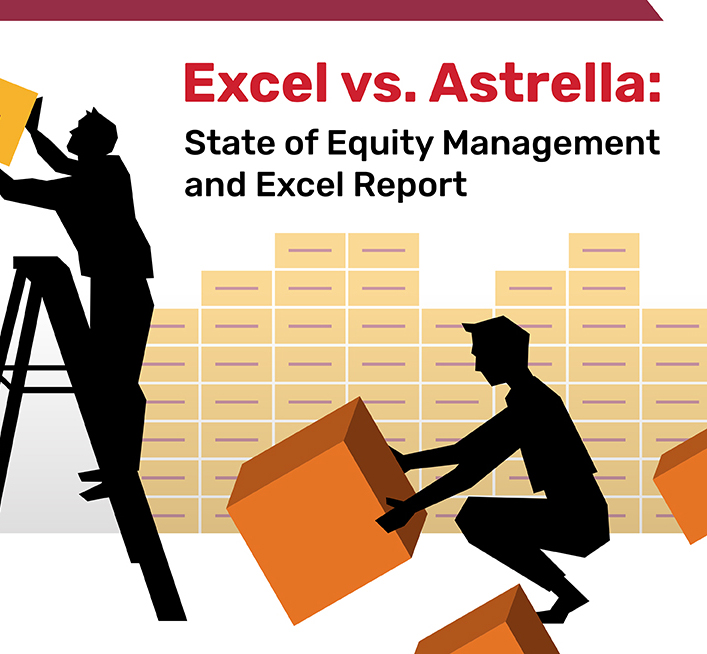Raising capital for your business is an exciting milestone in any startup’s development. However, before you can make the final pitch to potential investors, you must prepare and organize all of the relevant information they’ll need. The cap table is vital to this preparation; getting it ready for due diligence requires a few steps. This article will outline the steps entrepreneurs should take to prepare their cap tables for fundraising due diligence, including understanding different types of shares, organizing investor data, analyzing equity ownership structures, and creating a summary for potential investors. With these tips, you can confidently present your cap table and help move forward with fundraising efforts.
Understand What Is a Cap Table
A cap table is essential for any business looking to raise capital. Understanding the different components of a cap table and its purpose and relevance in fundraising due diligence is critical for entrepreneurs looking to secure investments.
At its most basic level, a cap table describes a company’s capital structure, including the issuance of common and preferred equity. Understanding the types of shares that can be issued – such as Class A, Class B, or Series A– is essential to get an accurate picture of your company’s equity ownership structure. The cap table will also include information about how many shares each investor holds and what percentage of ownership they have in the company.
Cap tables are utilized by investors when evaluating a company for potential investments. They give investors an overview of who owns what and how much interest each party has in the venture. This offers an easy-to-understand snapshot into the ownership dynamics within a business and can help inform their decision-making process when deciding whether or not to invest. Cap tables are also part of due diligence for fundraising; organized documents make it easier for investors to review financial history quickly and accurately assess risk factors associated with investing in your venture.
By understanding how to read and create a cap table, entrepreneurs can ensure they have an accurate and organized document ready to present to potential investors during due diligence processes. Organizing your capitalization data into one understandable report makes it easier for investors to review information quickly and accurately assess risk factors associated with investing in your venture – which puts you on track towards successfully raising funds for your business goals!
Organize Your Investor and Issuance Data
Properly managing investors and issuance data is critical to preparing for fundraising due diligence. As an entrepreneur, it’s essential to have a comprehensive list of all current investors and detailed records of past security issuances and transfers. This will assure potential investors that all information presented to them is accurate.
To begin organizing your investor and issuance data, create an up-to-date list of current shareholders, including accredited and non-accredited investors, if applicable. Then, gather any historical documents regarding security issuances or transfers, such as agreements or contracts related to share sales or options grants. Ensure you document any outstanding convertible notes or options/warrants issued over time and have an accurate record of the current share structure so potential investors can quickly evaluate equity stakes in the company.
By taking these steps before due diligence begins, entrepreneurs can ensure their cap table is organized and presentable for potential investors while also helping provide a better understanding of ownership structure when assessing risk factors associated with investing in the venture. A comprehensive grasp of your investor and issuance data will put you in good stead when seeking investments in your business.
Identify The Equity Ownership Structure of Your Company
Investing in a business is a serious decision, and potential stakeholders must accurately understand the company’s equity ownership structure. To ensure this, entrepreneurs must thoroughly analyze the number of shares held by each investor, any special agreements or vesting provisions in place, and verify all information included in the cap table. Doing so will provide investors with a clear picture of the business, its current and past shareholders, and confidence when evaluating their venture for investment opportunities. It is also essential to understand who has been involved in previous rounds of investment, as this can give insight into how existing shareholders view the company’s prospects for success. By taking these steps and ensuring their cap table is accurate and organized, entrepreneurs can demonstrate they are committed to transparency, which will help ensure successful fundraising due diligence processes.
Analyze The Impact of Future Financings on Equity Ownership
When preparing for fundraising due diligence, it is essential to analyze the impact of future financing on equity ownership. A company’s cap table represents its current and projected capital structure, which can be used to illustrate the effects of financing. Entrepreneurs should calculate the dilution of any future financing to assess potential changes in ownership and control accurately. Additionally, they should review vesting terms and identify potential conflicts between investors that could arise from different classes of shares.
By calculating the dilution of future financing, entrepreneurs can accurately determine how proposed investments affect their ownership stake. This includes understanding how many additional shares will be issued and how much each will be worth after conversion or vesting events. Additionally, entrepreneurs should review existing vesting terms to understand how their current ownership may change if certain conditions are met.
Entrepreneurs should also consider how different classes of shares could affect control over the company for potential investors. For example, certain types of preferred stock may include veto rights that can significantly limit investor influence over significant business decisions. Understanding these dynamics before fundraising due diligence begins is essential for avoiding costly surprises later in the process.
In addition to analyzing dilution and reviewing shareholder agreements, entrepreneurs should consider any outstanding convertible notes or options/warrants when preparing their cap table for fundraising due diligence processes. These documents must be organized and documented carefully so that investors have a comprehensive understanding of all potential liabilities associated with investing in a venture capital round or other financing agreement.
By considering all these steps when preparing a cap table for fundraising due diligence, entrepreneurs can ensure that their equity ownership is not negatively impacted by future financings while providing an accurate overview of the company’s capital structure to potential investors.
Create A Summary of Your Cap Table for Potential Investors
Creating a summary of your company’s capitalization table (cap table) is integral to fundraising due diligence. This document should include key metrics such as pre-and post-money valuations, the total amount raised, and the total amount outstanding. It should also explain any dilution that has taken place since the previous financing, describe vesting schedules applicable to company shares, and provide details on liquidation preferences granted to investors.
When preparing this summary for potential investors, entrepreneurs must ensure all information provided is accurate and up to date. This includes verifying various share classes with different terms (such as restricted stock or options/warrants), understanding how they fit into the overall ownership structure, and reviewing any agreements made with investors (e.g., liquidation preferences). To prevent confusion during the due diligence process, it is essential to double-check the cap table for inconsistencies or mistakes before presenting it to stakeholders. Additionally, entrepreneurs may wish to include visual aids such as pie charts or diagrams that outline their current equity ownership structure—this way, potential investors can better understand it at a straightforward glance.
Presenting an organized cap table summary to potential investors allows entrepreneurs to demonstrate their commitment to transparency while helping facilitate successful fundraising due diligence processes. Taking these steps ahead of time will enable them to present a precise view of their company’s current ownership structure while giving stakeholders enough information so they can make informed decisions about investing in the business.
Conclusion
For entrepreneurs, having an accurate and organized cap table is critical to successful fundraising due diligence. As such, it is essential to understand the complexities of your company’s equity structure. This includes awareness of the types of shares issued, recording investor data and issuance information, analyzing equity ownership structures, and summarizing key metrics such as pre- and post-money valuations. Additionally, you may need to consider any legal processes or resources that can help maintain accuracy before fundraising due diligence.
Finding a good cap table software solution is good for entrepreneurs looking to keep track of all their data in one place. By taking these steps into account when preparing for fundraising due diligence processes, companies can better position themselves for success by presenting an accurate overview of their capital structure, increasing chances for potential investment opportunities. Having an up-to-date and well-prepared cap table is essential to maximize your chances of securing successful investments from potential investors.
In conclusion, entrepreneurs should invest time into organizing their cap tables carefully to showcase a transparent view of their business and its capital structure during fundraising due diligence processes. By doing so, they will be more likely to be successful in attracting investors, ultimately leading to achieving business goals and objectives faster than otherwise possible.

Tom Kirby
Tom Kirby serves as the Head of Global Sales at Astrella. With more than 20 years of experience in sales and business development, he is dedicated to fostering strong client relationships and assisting both private and public companies in understanding and effectively communicating their value.
- Tom Kirby#molongui-disabled-link
- Tom Kirby#molongui-disabled-link
- Tom Kirby#molongui-disabled-link
- Tom Kirby#molongui-disabled-link
































































































































